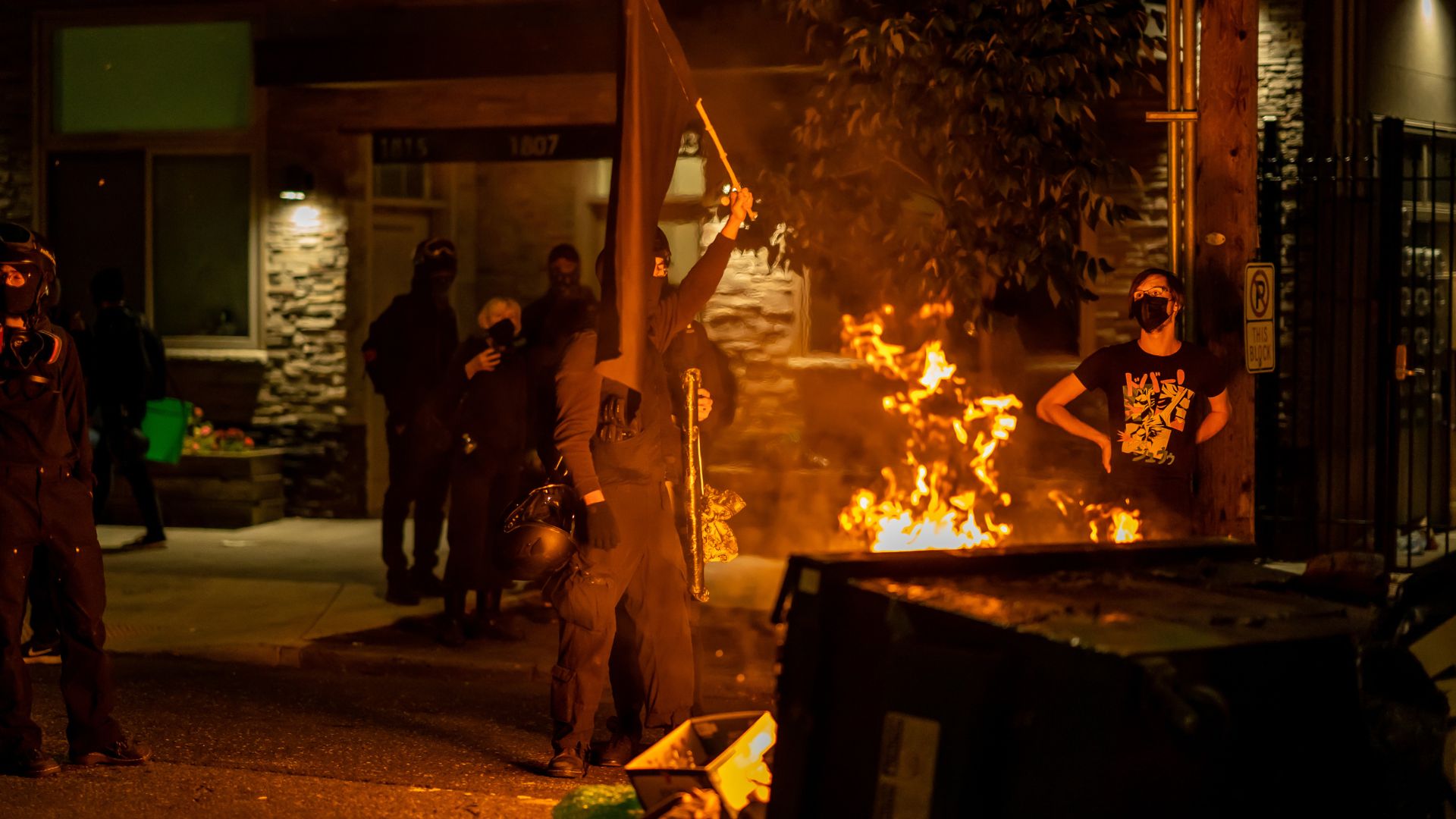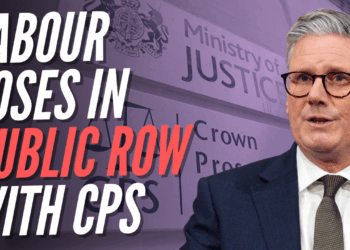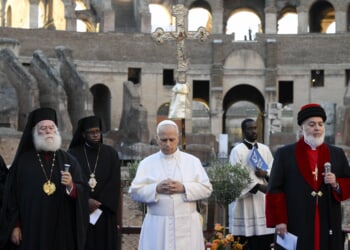
On the second day of testimony in Oregon v. Trump, et al., Department of Homeland Security officials defended the decision to deploy National Guard troops to assist federal agents at the Immigration and Customs Enforcement (ICE) facility in Portland, Oregon.
BREAKING: I went behind the scenes at the ICE facility in Portland with the Department of Homeland Security’s Federal Protective Service (@FPSDHS).
As anti-ICE protesters lay siege to the ICE facility for more than 90 consecutive days, here’s an inside look at the officers who… pic.twitter.com/Uy5pe4jJ5D
— Katie Daviscourt (@KatieDaviscourt) September 11, 2025
The case centers on whether the federal government acted lawfully when it ordered Guard troops to respond to escalating violence and unrest outside the ICE building on Macadam Avenue.
The federal trial, held in U.S. District Court, began earlier this week.
Oregon state and city officials are challenging the legality of the deployment, arguing that sending National Guard troops into Portland constitutes governmental overreach and risks worsening tensions between demonstrators and law enforcement.
This Could Be the Most Important Video Gun Owners Watch All Year
The Department of Justice (DOJ) maintains that the move was necessary to protect federal property and personnel following months of attacks by organized protesters, many associated with Antifa-linked groups.
Two witnesses from the Department of Homeland Security’s Federal Protective Service (FPS) testified Thursday, describing the ICE facility as a target of ongoing violence since early June.
Both witnesses criticized the Portland Police Bureau (PPB) for failing to respond to repeated calls for assistance during critical incidents.
The first witness, identified in court as “R.C.,” serves as the FPS Deputy Regional Director for Region 10 and has acted as incident commander at the ICE site multiple times since June.
R.C. testified that the facility has been under “sustained attack” by organized groups engaging in criminal conduct, including assaults on federal agents, blocking government vehicles, and attempting to breach the facility with improvised battering rams.
R.C. estimated that at least 180 law enforcement officers are required to properly secure the property each night.
RC testified that there needs to be at least 180 officers deployed to efficiently protect the Portland ICE facility.
He detailed incidents such as arson attacks, assaults on agents, unpredictable crowd sizes, attempted breaches of facility, trapping officers inside, etc.
— Katie Daviscourt (@KatieDaviscourt) October 30, 2025
He said the roughly 200 Oregon National Guardsmen federalized under President Donald Trump’s order would provide necessary relief to overextended federal personnel.
“National Guard troops would alleviate the strain on resources across all federal agencies currently deployed to the facility,” he told the court.
According to his testimony, federal officers from multiple agencies — including FPS, ICE Special Response Team (SRT), Customs and Border Protection (CBP), Border Patrol, and the Bureau of Prisons — have been diverted from their normal duties to respond to the Portland unrest.
R.C. said many of these officers would otherwise be conducting operations against high-priority criminal targets.
He also described the emotional toll on federal personnel, saying agents are routinely subjected to verbal abuse and physical threats.
“Protesters hurl vile, racist, and other harmful rhetoric at agents around the clock,” R.C. said, explaining that staff rotations were shortened from 30 days to 20 days to mitigate burnout and mental health strain.
R.C. testified that repeated requests for support from the Portland Police Bureau went unanswered.
He referenced a meeting earlier this year with PPB Chief Bob Day, where cooperation protocols were discussed.
When asked whether those expectations were met, R.C. replied, “No.” He described the local department’s withdrawal as “a repeated pattern of abandonment,” leaving federal agencies to handle both crowd control and criminal incidents occurring within PPB’s jurisdiction.
The second FPS witness, identified as Commander “W.T.,” served as an incident commander biweekly from July through late September.
Defense second witness: @FPSDHS Commander identified as initials “WT”
WT assumed the role of incident commander at the ICE facility from July to late-September on a bi-weekly basis.
— Katie Daviscourt (@KatieDaviscourt) October 31, 2025
His testimony corroborated R.C.’s account, detailing how nightly protests continued without police intervention.
“Unlawful protests occurred every night,” W.T. said, recalling that PPB had withdrawn its officers from the area in late June.
WT testified about his time at the ICE facility when Portland Police pulled back its presence in late-June on (false) claims that protests died down and there was no to limited criminal activity occurring.
— Katie Daviscourt (@KatieDaviscourt) October 31, 2025
W.T. cited multiple examples of vandalism, verbal harassment, and attacks on officers.
He said agitators regularly used shields, ballistic vests, high-powered flashlights, and lasers to interfere with law enforcement operations.
“They’ve even urged officers to ‘kill themselves,’” he told the court.
Portland, Ore. — Agitators urge federal police officers to commit su—cide at the ICE riot.
Snipers on top of the roof remain unphased. pic.twitter.com/D5E9ehWHPN
— Katie Daviscourt (@KatieDaviscourt) October 5, 2025
One documented event, referred to as the “guillotine incident,” occurred on September 1.
Demonstrators reportedly placed a mock guillotine in the roadway outside the ICE facility and formed a human chain with shields to block the driveway, trapping personnel inside.
“It was an extreme threat,” W.T. testified.
NOW — Antifa militants roll out a guillotine outside the ICE facility in Portland.
A flag has been set on fire. Hundreds of protesters are holding the line, equipped with riot gear and shields. pic.twitter.com/qwPOjWaV2a
— Katie Daviscourt (@KatieDaviscourt) September 2, 2025
During cross-examination, a City of Portland attorney suggested that carrying shields or similar items might not be illegal.
W.T. responded that the combination of such gear and actions — including the guillotine blockade — amounted to disorderly conduct and indicated the gatherings were not peaceful.
Both FPS witnesses agreed that National Guard deployment would be beneficial given the “24-hour unlawful protest activity” and severe staffing shortages among federal officers.
The Department of Justice is expected to call additional witnesses from ICE and the Department of War before the trial concludes Friday.
The court’s decision will determine whether the federal government’s deployment of National Guard troops in Portland was justified under federal law and necessary for the protection of federal property.
The opinions expressed by contributors and/or content partners are their own and do not necessarily reflect the views of LifeZette. Contact us for guidelines on submitting your own commentary.

![Portland Police Failed as Antifa Riots Raged [WATCH]](https://www.right2024.com/wp-content/uploads/2025/11/Portland-Police-Failed-as-Antifa-Riots-Raged-WATCH-750x375.jpg)















